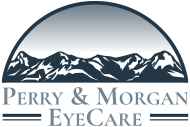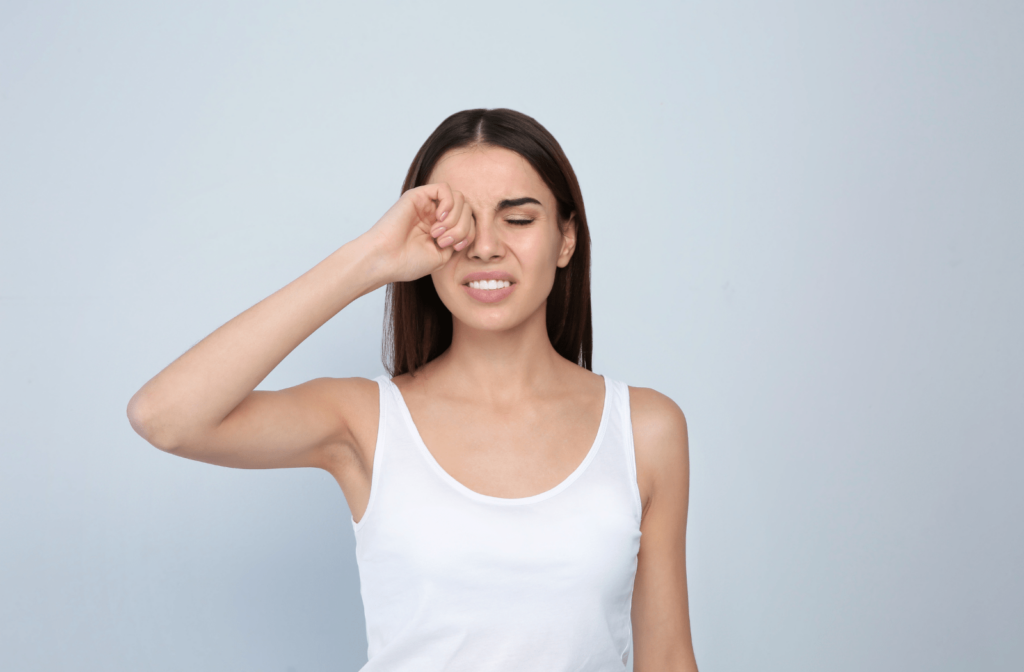Dry eye is a common condition that can cause red, irritated eyes. When you have dry eye syndrome, everyday use of your eyes can feel uncomfortable. Dry eye is often called Ocular Surface Disease.
To determine if you have dry eye syndrome, visit your optometrist to schedule an eye exam and dry eye assessment. From there, your eye doctor can determine a treatment solution to help you find relief from scratchy, gritty eyes.
Several dry eye therapies exist, including specialty contact lenses that help your eyes retain moisture.
Using Contact Lenses to Relieve Dry Eye
It is possible you’ve been told that contact lenses can cause dry eye, and while that may be true for certain types of contacts, there are specialty contacts that help your eyes retain moisture.
These specialty contact lenses are called scleral lenses, and they sit on your sclera, the white part of your eye. These lenses are rigid gas permeable, meaning they are made out of harder plastics and are considered more durable than regular soft contact lenses.
Scleral lenses help your eyes retain moisture through their unique design. These lenses vault over your cornea (the front part of your eye), unlike other contacts that sit directly on your cornea. As scleral lenses do this, they create a reservoir of fluid between the lens and the front of your eye, where moisture can build and hydrate your eyes.
Adjusting to Scleral Lenses
When you get new contact lenses, you may be aware of how they feel in your eyes, and with soft contacts, that feeling generally diminishes quickly.
However, because scleral lenses are larger in diameter and made of less-malleable material, they can take a bit longer to get used to.
Adjusting to scleral lenses means enjoying hydrated eyes and excellent vision—many patients have experienced the benefits scleral lenses can provide.
Other Ways to Reduce Dry Eye Symptoms
Contact lenses aren’t the only way to reduce dry eye symptoms. Your optometrist may offer a wide selection of dry eye treatments. But, how do you know which is right for you?
Attending your regularly scheduled comprehensive eye exams is the first place to start. By doing this, you can discuss your dry eye symptoms with your eye doctor, they can conduct additional assessments if needed, and you can start your journey toward comfortable, hydrated vision.
Depending on the cause of your dry eye symptoms, your optometrist may recommend the following treatments:
- Intense-pulsed Light (IPL) Therapy—A light-based noninvasive treatment that helps improve tear break-up time and increase gland functionality near your eyes.
- LipiFlow—A gentle, heat-based treatment used to stimulate gland functionality near your eyes, to produce healthier, long-lasting tears.
- BlephEx—A gentle eyelid cleanse performed by your optometrist that removes debris, bacteria, and irritants that lead to dry eye symptoms.
Your eye doctor may recommend several therapies in conjunction with one another to help combat your dry eye. The type of therapies your eye doctor recommends depends on the type of dry eye you have, and what is causing your symptoms.
How Do I Know If I Have Dry Eye?
An estimated 16 million Americans have been diagnosed with dry eye. You are not alone.
Dry eye syndrome is caused either by not having enough tears, or your eyes producing poor-quality tears. Your tears have a production and drainage system that helps your eyes stay hydrated. If your tears leave your eyes too quickly, there could be an imbalance in the ingredients that make up your tears.
Your optometrist can determine if you have dry eye, and what is causing your symptoms.
Common symptoms of dry eye include:
- Redness in and around your eyes
- Stinging, scratching, or burning sensations
- Extra watery eyes and tears that fall down your face frequently
- Light sensitivity and difficulty adjusting to new lighting
- Stringy mucus around your eyes
- Fluctuating or blurry vision quality
What Causes Dry Eye?
There are several reasons you could develop chronic or acute dry eye symptoms, including:
- Age
- Gender
- Medications
- Medical conditions
- Environmental conditions
How to Prevent Dry Eye
You can work to reduce your likelihood of developing dry eye, even if you are at higher risk.
Preventing dry eye from developing in the start can help you enjoy clear, comfortable vision.
Here are some tips to prevent dry eye:
- Remember to blink! This may sound silly, but we tend to blink less when we’re using screens. A good rule of thumb is the 20/20/20 rule. Every 20 minutes of screentime, take a 20 second break, look 20 feet away and give your eyes some good deliberate blinks.
- Increase the humidity in your home or work environment to promote moisture in the air.
- Wear sunglasses to shield your eyes from dry wind and harmful UV exposure.
- Take supplements containing healthy fatty acids to promote oil production in your tears.
- Drink plenty of water to stay hydrated and avoid drying out your eyes.
- Don’t direct fans or heaters at your face so you can avoid unnecessary dryness.
Find Out If Scleral Lenses Can Help You
Your qualified optometrist can assess your eyes and help determine if scleral lenses are right for you. We want you to find relief from your uncomfortable dry eye symptoms. Contact the team at Perry & Morgan EyeCare to get started today.



